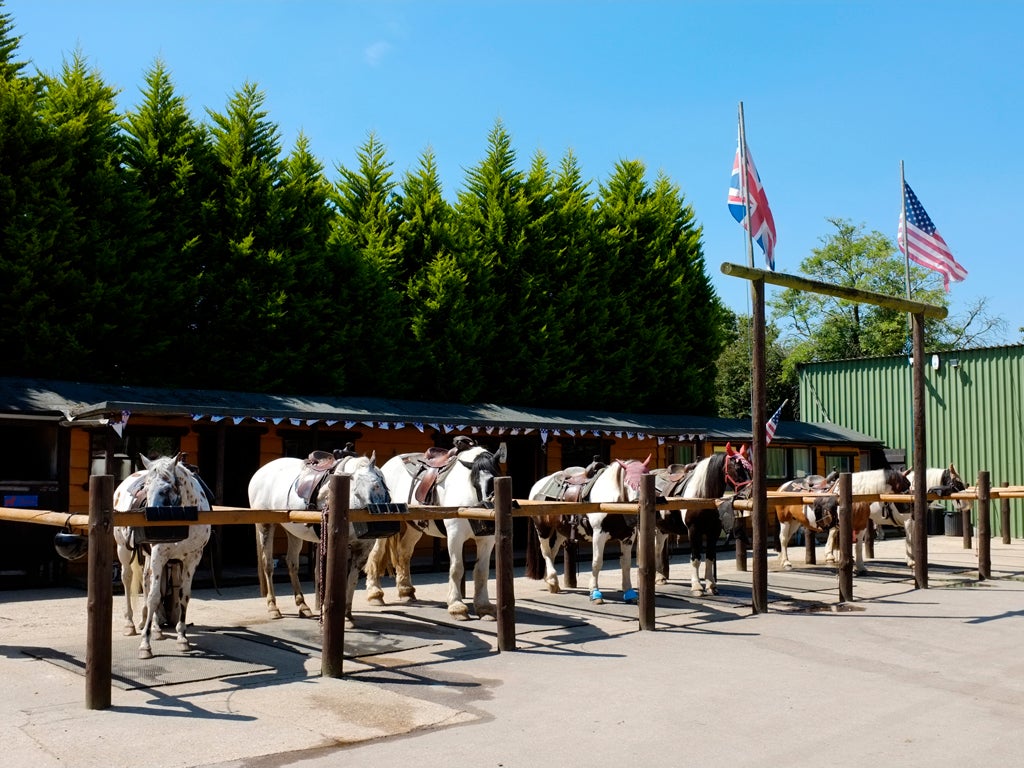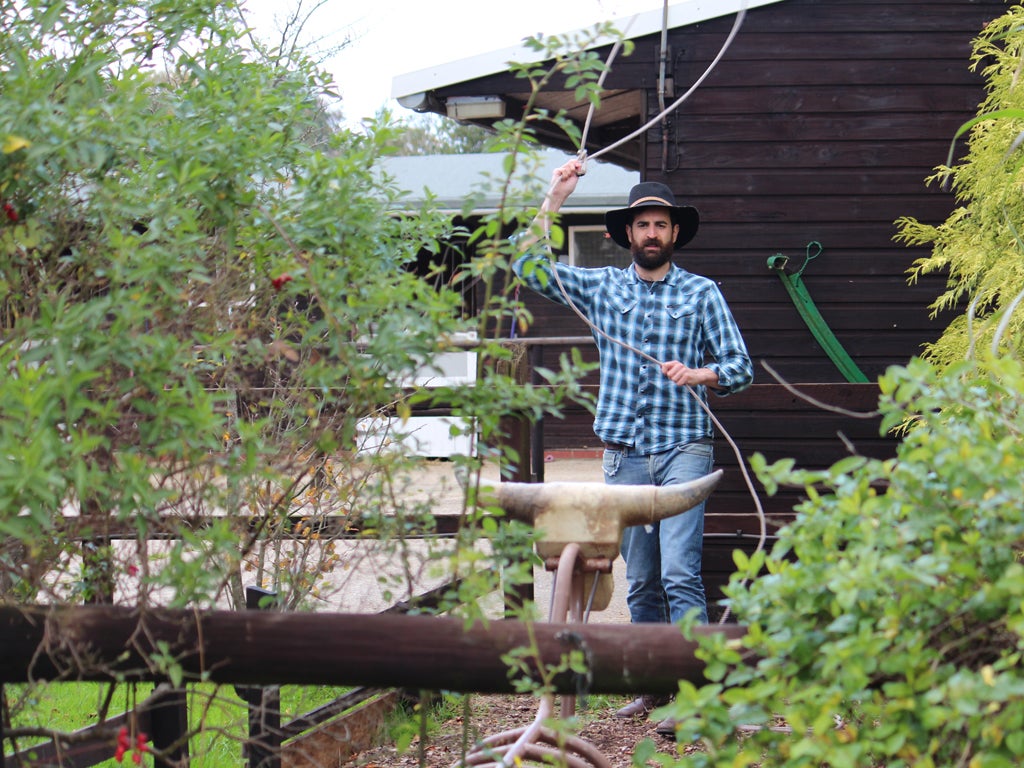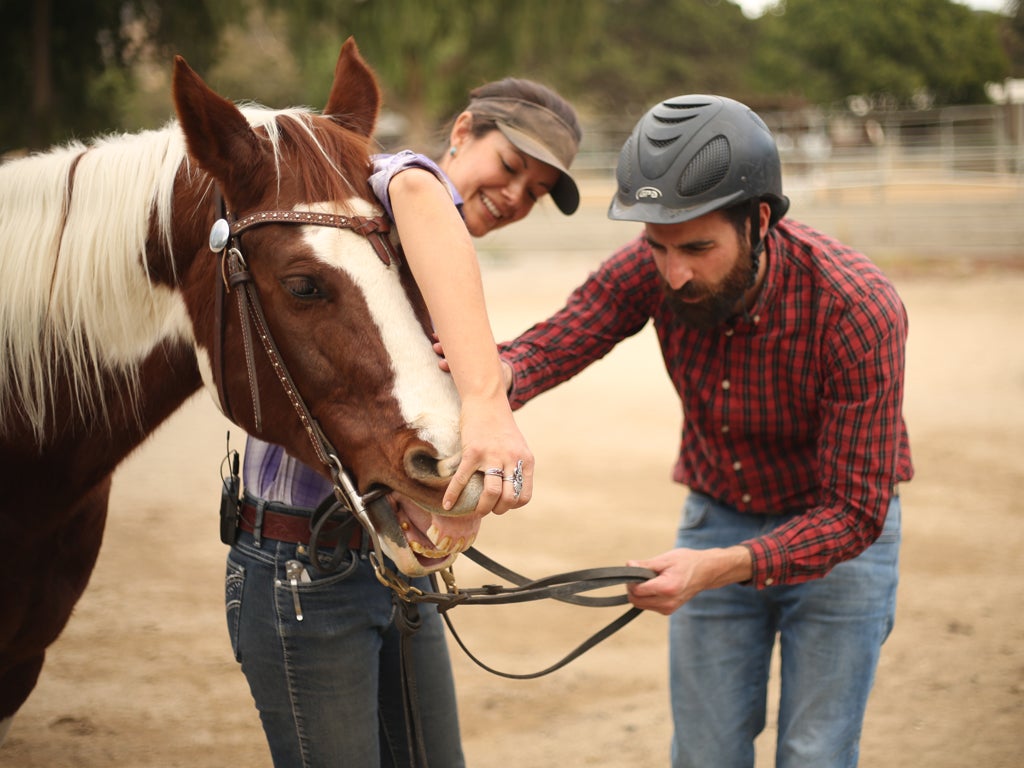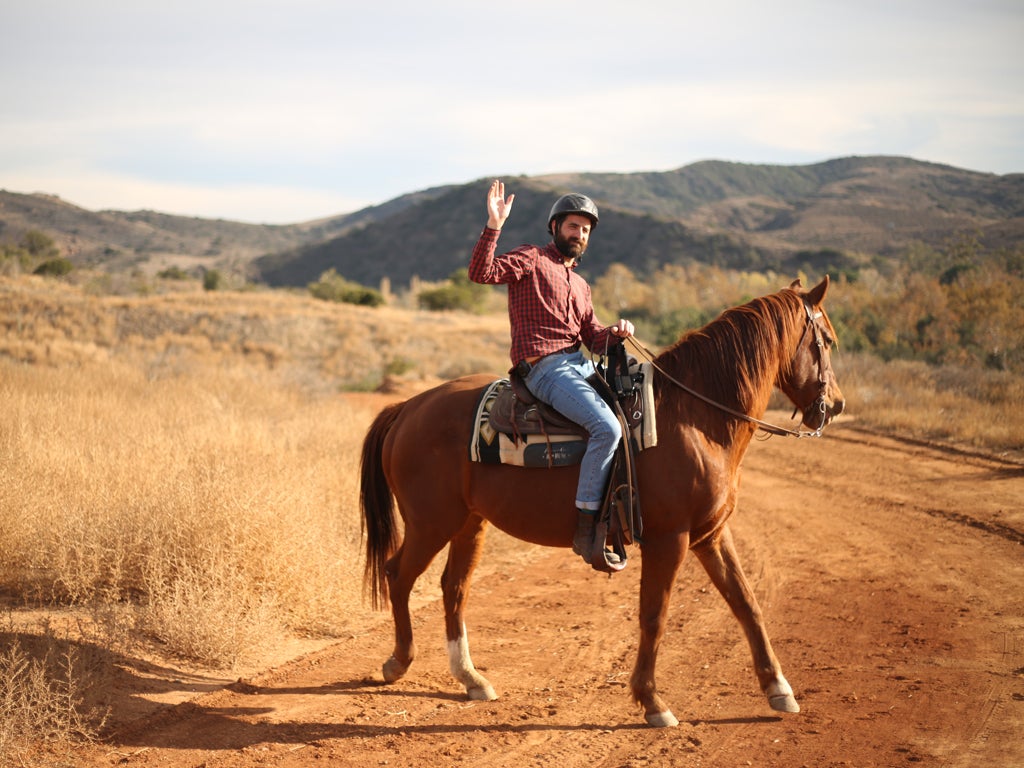The Independent's journalism is supported by our readers. When you purchase through links on our site, we may earn commission.
Learn how to be a cowboy in the UK and United States
Learn the basics in the New Forest, before being spurred on to join the pros in the Wild West of California
Your support helps us to tell the story
From reproductive rights to climate change to Big Tech, The Independent is on the ground when the story is developing. Whether it's investigating the financials of Elon Musk's pro-Trump PAC or producing our latest documentary, 'The A Word', which shines a light on the American women fighting for reproductive rights, we know how important it is to parse out the facts from the messaging.
At such a critical moment in US history, we need reporters on the ground. Your donation allows us to keep sending journalists to speak to both sides of the story.
The Independent is trusted by Americans across the entire political spectrum. And unlike many other quality news outlets, we choose not to lock Americans out of our reporting and analysis with paywalls. We believe quality journalism should be available to everyone, paid for by those who can afford it.
Your support makes all the difference.Part one: New Forest, UK
I’ve been fascinated with cowboys and everything about them as far back as I can remember. As a kid I’d spend drizzly school holidays sprawled out in front of A Fistful Of Dollars and Butch Cassidy and the Sundance Kid, transfixed as stetson-sporting heroes swaggered into saloons and fired rifles at the merest provocation. These were out and out tough guys who were irresistible to women and could handle their bourbon straight. I was infatuated.
The reality is that I’m from the north London suburbs. I’ve never worn a poncho, let alone chased anyone on horseback. At least, not until now. My task was to learn to handle a horse along with some of the basics of cowboy culture in England before making straight for the Old West; the wide-open prairies of California to put my skills in to practice.

I’d be kick-starting my Wild Western adventure among wild ponies in the heart of the New Forest. Burley Villa School Of Riding is an effective mock-up of a Western town of old. It comes complete with life-size cardboard cut-outs of John Wayne, a stacked display of (presumably decommissioned) rusty rifles and endless American flags. The school's logo even depicts a cowboy on horseback, sandwiched between the Stars and Stripes and a Union flag.
My trainer, Tammy Greaves, has represented Great Britain in equestrianism, but her task today is to show me the ropes of Western riding; the most comfortable mode of cowboy travel. A thick leather saddle spreads out over a large area of the horse’s back, increasing surface area for rider bulk. For the more nimble horseman, the steed can then be controlled with one hand on the reins while the other is free to fling a trusty lariat at errant bull calves.
Tammy takes me through the basics as I inelegantly flop on to Tommy, my obedient - if unenthusiastic - quarter horse. To get him moving I have to clack my heals a couple of times into his flanks, accompanied by a double-click of my teeth. We amble forward and nearly collide with the paddock wall. I’m told I must lean my upper body weight in the direction I want to travel. It works. Guiding Tommy’s head with one hand and leaning the same way alters his trajectory. To stop it’s a loud “woah!” and a firm pull back on the reins.

After an hour of maneuvering my horse around the paddock, I’m hopping off for a lasso lesson. Phil, Burley's boss, is my roping guide. He meets me by the “target practice”: a metre-high metallic bull. “Hold the loop open,” he commands. “Spin it around your head as fast as you can ... and throw!” He promptly misses. I assure him I’ll have more luck and take hold of the rope. I spin it round my head and nearly garrote myself in the process. It’s hapless, light years from the stuff of Roy Rogers movies. I try several times. It’s important to build up momentum by circling the cable around your head before hurling. I finally land two back to back on the target; Phil seems genuinely impressed. Next stop: California.
Part two: Irvine, California
Irvine is a couple of hours' drive east of LA, past the wrinkle-free foreheads of Orange County and away from the anodyne Anaheim hotels that service the conveyor belt of Disneyland vacationers. The shopping malls and gas stations melt away as my car rises into the mountains, the smell of diesel fumes soon replaced with smoky tones of cedar wood and pollen.
The history of cowboys is long and complex, but the roots of the modern mythical cowboy can be traced back to the plains of Texas in the 1800s, after which time they spread across the country as cattle numbers multiplied. There are still thousands across the country who work the land and are proud to call themselves cowboys.
I’m greeted by my instructor, Melisa, on the gravel-strewn driveway of Country Trails. She’s six foot tall, broad shouldered with teeth like pearls. I thank her for training me up. “Oh I’m not a trainer, David,” she gently chastises. “I’m a wrangler. You’ve got to get that right.”

I notice the farm’s other wranglers as we make for the paddock. They are dressed just like Melisa: boot-cut denims, big belt buckles, checked shirts and pin-sharp spurs. I wince at my skinny jeans and hob-nailed boots.
I tell Melisa about my practice run back at home, and soon I’m being put through my paces in the training yard. As in England, I’m encouraged to use my body weight to drive the horse in the right direction. “There you go!” she shrills in an upbeat, American drawl. “You’re getting it!” There are five speeds to Western riding; walk, jog, lope, gallop, run. With some extra heel clicks I’m soon taking my horse up a notch to jog. It’s exhilarating to get it right and I’m forced to cling tight to the reins.

Soon Melisa and I head out for a ride in the mountains. The afternoon temperature has rocketed and soon I’m wiping beads of sweat out of my eyes. It’s incredibly still and quiet but I feel nervous. The horse seems unsettled by my riding technique and my guide has to gently grab his bit when he fails to understand my commands. As a horseman, I clearly have a long way to go.
Back at the ranch I end my day with farmhand Geronimo, a whizz with the lasso. He explains - in a combination of English and Spanish - how to land the rope on a target five metres away. He hits it again and again. He’s barely trying. I try. And try. And try. I seem to have got worse since my English training, but eventually I hit the bullseye.
The sun is setting and before I head off I ask Melisa if she thinks I’m ready to be a cowboy. “After a month of dedicated riding I think you’d be good to go.” she tells me, optimistically. I’ll take that.
Travel essentials
Getting there
David flew with Virgin Atlantic (0344 8747 747; virginatlantic.com) from Heathrow to Los Angeles; return fares start at £586. LA is also served by Air New Zealand, American Airlines, British Airways, Norwegian and United Airlines.
Hayes & Jarvis (01293 762 456; hayesandjarvis.co.uk) offers seven-night trips to California from £1,099pp, including four nights at the Hilton Anaheim and three at the Hyatt Regency Huntington Beach (both room only), flights from Heathrow and car hire.
Riding there
Country Trails Riding School, Irvine, California (001 714 538 5860; ctriding.com) offers one-hour trail rides for $45pp (£32). Lasso lessons on request.
Burley Villa School Of Riding, New Milton, Hampshire (01425 610278; burleyvilla.co.uk) offers 45-minute Western Riding lessons with Tammy Greaves for £45pp. Lasso lesson on request.
More information

Join our commenting forum
Join thought-provoking conversations, follow other Independent readers and see their replies
Comments